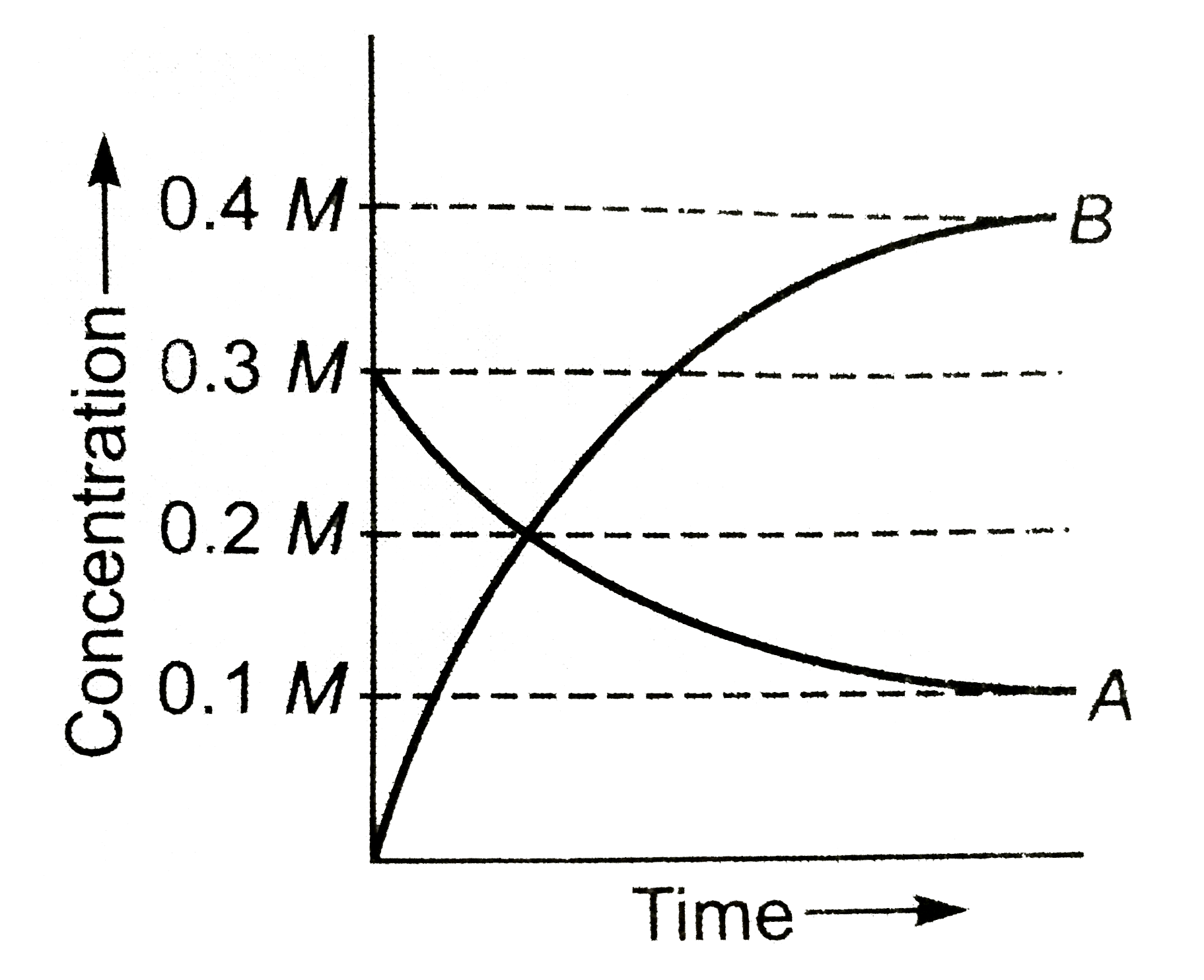The two equilibrium AB⇔A++B−andAB+B−⇔AB−2 are simultaneously maintained in a solutio with equilibrium constant K1andK2 respectively. The ratio of [A+] to [AB−2] in the solution is
directly proportional to the concentration of B−
inversely proportional to the concentration of B−
directly proporitonal to the squar eof the concentration of B−
Inversely proportional to the square of the concentration of B−.
The correct Answer is:D
To solve the problem, we need to analyze the two equilibria and their respective equilibrium constants.
1. Identify the Equilibria:
- The first equilibrium is:
AB⇌A++B−
- The second equilibrium is:
AB+B−⇌AB−2
2. Write the Equilibrium Constants:
- For the first equilibrium, the equilibrium constant K1 is given by:
K1=(A+)(B−)(AB)
- For the second equilibrium, the equilibrium constant K2 is given by:
K2=(AB−2)(AB)(B−)
3. Divide the Equilibrium Constants:
- To find the ratio of (A+) to (AB−2), we can divide K1 by K2:
K1K2=(A+)(B−)(AB)(AB−2)(AB)(B−)
- This simplifies to:
K1K2=(A+)(B−)2(AB)(AB−2)
4. Rearranging the Equation:
- Rearranging gives us:
(A+)=K1K2⋅(AB−2)(B−)2
5. Finding the Ratio:
- From the above equation, we can express the ratio of (A+) to (AB−2):
(A+)(AB−2)=K1K2⋅1(B−)2
Final Result:
Thus, the ratio of (A+) to (AB−2) in the solution is:
(A+)(AB−2)=K1K2⋅(B−)2
- The first equilibrium is:
AB⇌A++B−
- The second equilibrium is:
AB+B−⇌AB−2
- For the first equilibrium, the equilibrium constant K1 is given by:
K1=(A+)(B−)(AB)
- For the second equilibrium, the equilibrium constant K2 is given by:
K2=(AB−2)(AB)(B−)
- To find the ratio of (A+) to (AB−2), we can divide K1 by K2:
K1K2=(A+)(B−)(AB)(AB−2)(AB)(B−)
- This simplifies to:
K1K2=(A+)(B−)2(AB)(AB−2)
- Rearranging gives us:
(A+)=K1K2⋅(AB−2)(B−)2
- From the above equation, we can express the ratio of (A+) to (AB−2):
(A+)(AB−2)=K1K2⋅1(B−)2
Thus, the ratio of (A+) to (AB−2) in the solution is:
(A+)(AB−2)=K1K2⋅(B−)2
Topper's Solved these Questions
- PRACTICE PAPER 3Book:NCERT FINGERTPS ENGLISHChapter:PRACTICE PAPER 3Exercise:Practice Paper 3
Explore 46 Videos
- PRACTICE PAPER 2Book:NCERT FINGERTPS ENGLISHChapter:PRACTICE PAPER 2Exercise:Practice Paper 2
Explore 44 Videos
- REDOX REACTIONSBook:NCERT FINGERTPS ENGLISHChapter:REDOX REACTIONSExercise:Assertion And Reason
Explore 15 Videos
Similar Questions
Two equilibrium AB⇔A++B− and AB+B−⇔AB−2 are simultaneously maintained in a solution with equilibrium constants K1 and k2, respectively. Ratio of [A+] to [AB−2] in the solution is
View SolutionThe unit of equilibrium constant Kc for the reaction A+B⇔C would be
View SolutionThe equilibrium A(g)+4B(g)⇔AB4(g) is attained by mixing equal moles of A and B in a one litre vessel Then at equilibrium
View Solutionconsider the following gaseous equilibrium with equilibrium
constant K1 and K2 respectively
SO3(g)⇔SO2(g)+1/2O2
2SO3(g)⇔2SO2(g)+O2(g)
The equilibrium constants are related as
View SolutionIn a general reaction A+B⇔AB, which value of equilibrium constant most favours the production of AB?
View Solutionconsider the following gaseous equilibrium with equilibrium constant K1 and K2 respectively
SO2(g)+1/2O2⇔SO3(g)
2SO3(g)⇔2SO2(g)+O2(g)
The equilibrium constants are related as
View SolutionIn the equilibrium,AB(s)→A(g)+B(g), if the equilibrium concentration of A is doubled, the equilibrium concentration of B would become
View SolutionThe figure shows the change in concentration of species A and B as a function of time.
The equilibrium constant Kcfor the reactionA(g)⇔2B(g) is :

View SolutionFor the reaction H2(g)+I2(g)⇔2HI(g)
the equilibrium constant Kp changes with
View SolutionFor the reaction H2(g)+I2(g)⇔2HI(g)
the equilibrium constant Kp changes with
View Solution

